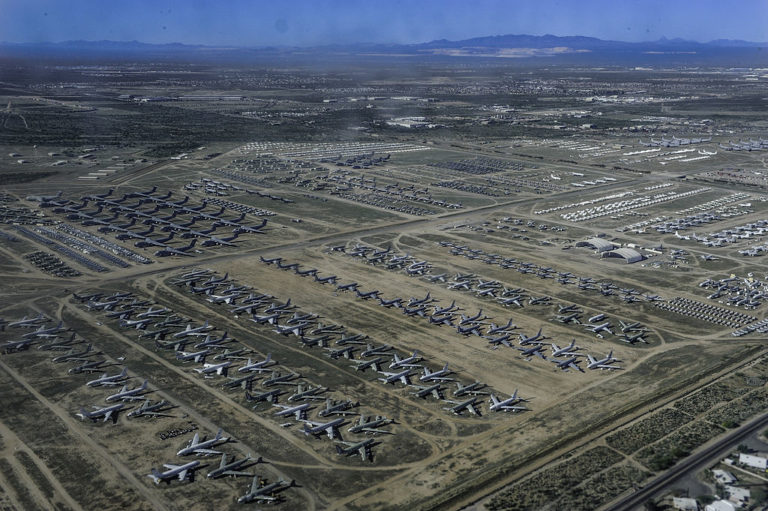Exposure to Agent Blue at Davis-Monthan Air Force Base

Davis-Monthan Air Force Base is a United States Air Force base located near Tucson, Arizona. The base is home to the aircraft boneyard where retired military aircraft are stored.
During the years 1973 to 1977, the herbicide known as Agent Blue was used routinely on the grounds at Davis-Monthan Air Force base, partly as a means of disposal after its use in the Vietnam War.
Many veterans are familiar with Agent Orange, a harmful herbicide widely used by the United States during the Vietnam War era. After the war, the remaining stores of Agent Orange were burned offshore. However, Agent Blue, also an herbicide used in the Vietnam War, could not be burned due to its high concentration of arsenic. The Agent Blue stored at Johnston Island was instead shipped to Davis-Monthan Air Force Base and sprayed there in order to dispose of the remaining stores.
What Does the VA Consider To Be an Herbicide?
Under its presumptive regulation for herbicides, the VA defines an herbicide agent as: 2, 4-D, 4, 5-T and/or its contaminant TCDD: cacodylic acid, or picloram. The herbicide Agent Orange used in Vietnam contained 2, 4-D, 2, 4, 5-T and TCDD.
Agent Blue was also used in Vietnam and contained cacodylic acid, a chemical included in VA’s list of herbicides agents. Agent Blue, or cacodylic acid, also contained high levels of arsenic, a harmful lung carcinogen.
How Do I Qualify for Disability Based on Agent Blue Exposure?
Since Agent Blue contains cacodylic acid, a chemical listed as an herbicide in VA’s regulation, veterans who were exposed to Agent Blue at Davis-Monthan Air Force Base between 1973 and 1977 may be entitled to presumptive service connection for certain diseases if VA concedes exposure to the herbicide agent.
Diseases the VA associates with exposure to herbicides include:
- AL Amyloidosis
- Chloracne and other acneform disease consistent with chloracne
- Diabetes Mellitus Type II
- Hodgkin’s Disease
- Ischemic Heart Disease
- All chronic B-cell Leukemias
- Multiple Myeloma
- Non-Hodgkin’s Lymphoma
- Parkinson’s Disease
- Early-onset peripheral neuropathy
- Porphyria cutanea tarda
- Prostate Cancer
- Respiratory Cancers, such as cancer of the lung, bronchus, larynx and trachea
- Soft Tissue Sarcoma
In order to obtain presumptive service connection for these conditions, veterans must show that they were exposed to Agent Blue while stationed at Davis-Monthan Air Force Base between 1973 and 1977. Veterans can do this by submitting evidence showing the use of Agent Blue at the base and explaining their location relative to where the herbicide was used. If a veteran can show they were exposed, VA presumes that their disability was caused by their exposure.
If you believe you were exposed to Agent Blue while stationed at Davis-Monthan Air Force Base between 1973 and 1977, our office may be able to help. Call our office at 844-567-1185 for a free case evaluation.
About the Author
Share this Post
